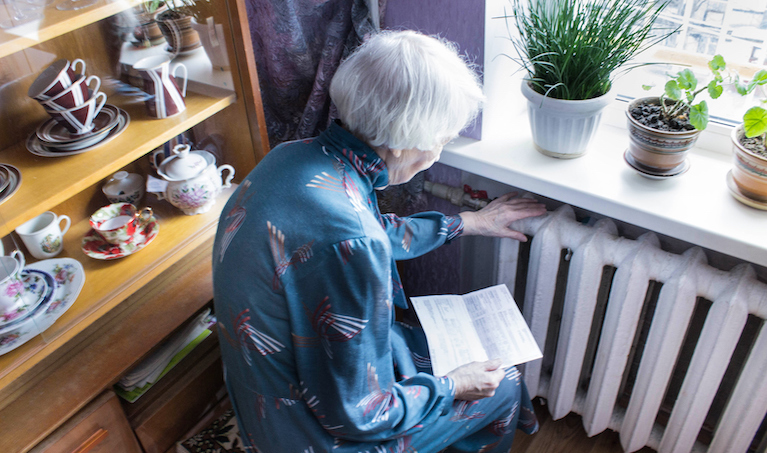Towards the end of summer, the media was full of panic about energy bills, reporting that many households would have to choose between heating and eating this winter.
A survey by Savanta ComRes of over 2,000 UK adults reported that 23% planned to not turn their heating on at all this winter. This figure was even higher – 27% – among parents with children under 18. A further 69% of respondents said they would switch their heating on less, and 10% were considering taking out a loan to help them pay their bills.
Then on September 8th, the new government announced a price cap of £2500 on energy bills, fixed until 2024.
But what does this actually mean? And will you still have to choose between heating and eating this winter?
Let’s take a look.
How much will your energy cost?
The cost of your energy is affected by several different factors:
The Energy Price Guarantee – the price cap – is now set at £2500 until 2024. Which is lower than previously anticipated.
But this does not mean your bill will definitely be below £2500 per year. It depends on how much energy you use.
The price cap is based on the energy used by an “average household”. Energy is measured in kWh – kilowatt hours. The average figures on which the price cap is based are:
- 12,000 kWh of gas a year
- 2,900 kWh of electricity a year
If you use energy up to these amounts, your annual bill will be no more than £2500. It may be less than £2500 depending on the tariff you are on with your energy supplier.
But if you use more than the average household, your bill could then go over £2500.
You can find out how much energy you are using by looking at your latest energy bill. You should be able to see how much energy you have used for the last month, and there should also be information about your annual usage.
The exact amount you are charged per kWh depends on your energy tariff. Prices can vary depending whether you are on a fixed or variable tariff. It is worth checking what tariffs your supplier has available to see if there is a better one that you can change to.
It is also still possible to change suppliers, although this is more difficult to do in the current climate. Many comparison websites are now offering only price comparison rather than a full switching service, but it could still be worth checking whether you could get a better deal elsewhere, and contacting your potential new provider directly.
As well as your energy use, you will usually also have to pay a “standing charge”. This is a fixed daily amount that covers the costs to your supplier of providing your home with gas and electricity.
This varies between regions and suppliers, but can be up to 46p per day for electricity and 28p per day for gas.
-
The Energy Bills Support Scheme
The good news is that help is available with energy bills this winter. Every UK household with a domestic electricity connection will receive a £400 non-repayable discount on their energy bills.
In England, Scotland and Wales this will be via The Energy Bills Support Scheme. Households will receive £66 in October and November and £67 in December, January, February and March.
In most cases these amounts will be applied by your energy company either as a reduction to your direct debit payment, a refund to the bank account from which the direct debit comes, or a credit to your energy account or smart payment meter.
Arrangements for the Northern Ireland Energy Bills Support Scheme will be announced shortly.
-
Additional financial help
There are also other existing government initiatives that offer additional help with energy bills, over and above the Energy Bills Support Scheme:
- Winter Fuel Payment – a payment of £250-£600 for fuel for people born on or before 25 September 1956.
- Cold Weather Payment – a payment of £25 for every week of very cold weather between November and March.
- Warm Home Discount – a discount on your electricity bill of up to £140 for people on low incomes or certain benefits, including the Guarantee Credit element of Pension Credit. The next Warm Home Discount scheme opens in November.
How can you save money on your energy bills?
By now you should hopefully have a clearer idea of how much your energy bills are likely to cost.
But if this is based on your usage for the past year, there are ways that you can reduce your usage without having to keep the heating turned off completely.
Our recent article How to save money on energy bills this winter includes helpful information about ways in which you can make changes to your home and lifestyle and can use less energy in your home. Five quick examples are:
- Turn your heating down by 1 degree. You probably won’t feel the difference, particularly if you are warmly dressed, but you will save money.
- Switch everything off when it is not being used. This includes turning off the lights when you leave a room, and switching off appliances and devices at the wall rather than leaving them in standby.
- Use LED light bulbs. They are much more economical than traditional bulbs and also reduce carbon emissions.
- Check your home for draughts. Block the sources of the draughts where you can, and also add heat conserving measures such as insulating jackets for hot water tanks and pipes, and thick curtains for windows and doors.
- Investigate possible energy saving measures for your home, such as loft insulation, cavity wall insulation or solar panels. There is more information on these on The Energy Saving Trust website.
We hope that this article has helped you to understand more about energy prices, what kind of energy bills you can expect over the next few months, and how to use less energy – and save money on your energy bills – in your home.
Check back here again soon for more money saving tips from Loans 2 Go.


 Now is the time to start planning your financial goals for 2026
Now is the time to start planning your financial goals for 2026 
















